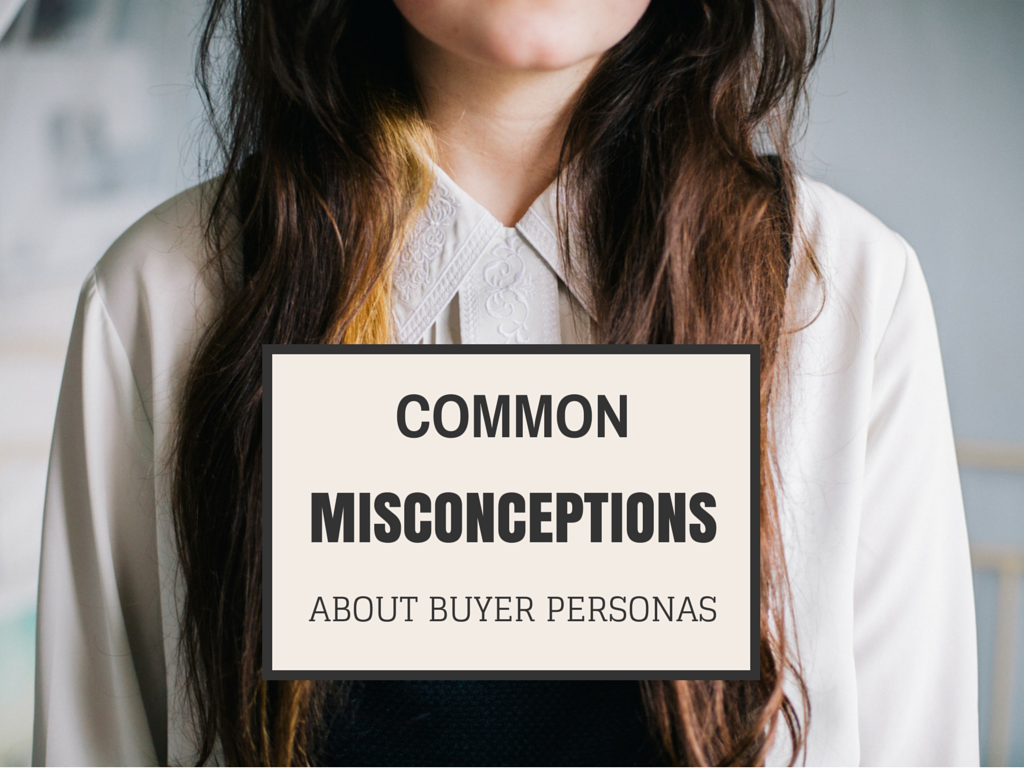- Jan 19, 2015
- By Emily Inman
- In Content Marketing
Common Misconceptions About Buyer Personas


These days, if you’re involved in any way in the digital marketing efforts of your organization, it’s likely that you are, at the very least, vaguely familiar with the concept of buyer personas—the (semi-)fictional profiles that represent a certain archetypal buyer within your business or industry. But while a good number of you may be familiar with the idea of buyer personas, their practical application is something else altogether.
Today, I’d like to dispel two common misconceptions that we’ve seen about the purpose and use of buyer personas.
1. A buyer persona is of no use in my industry.
This is just patently untrue.
While it may be easier to track the impact of a buyer persona used in certain industries and verticals—it is, for example, relatively easy for a B2B company with a dedicated sales team to follow a buyer’s journey over time through website content to final sale— but by no means is a persona is worthless elsewhere.
If you’ve made it this far in your investigation of inbound marketing, you’ve likely come to recognize that content is the future of marketing. But, as KISSMetrics co-founder Neil Patel points out, “content marketing alone won’t deliver organic traffic. Content marketing, strategically employed, will deliver the organic traffic you want and need. Content marketing alone won’t deliver organic traffic. Content marketing employed strategically will deliver the organic traffic you want and need.”
And personas provide the focus you need to produce strategic content.
In fact, the very act of developing buyer personas is itself a part of your marketing strategy. Tony Zambito, leading authority on buyer insights and persona development, wrote on his blog that “buyer persona development is an exercise in formulating customer and buyer strategies.” In essence, the insights you need to develop buyer personas are those that inform your selling tactics.
2. Personas are limiting. I have too many different buyers to develop content for just one or two.
Most businesses (I would even go so far as to say all) don’t have just one buyer—or even just one type of buyer. Fair enough. That doesn’t mean, however, that focusing your efforts on just one (maybe two, if you’re a B2B business where a successful sale necessitates buy-in from multiple persons or departments) of those personas won’t do you any good. In fact, the more scattered your customer base, the more likely you are to benefit from the laser focus of a single persona— at least to start.
When you first start inbound marketing, you’re just beginning to build up your resources and turn you current digital assets into conversion opportunities. To get the best response from your efforts, you need to know that there’s someone out there who’s going to want to hear what you have to say.
That means targeting your content as specifically as possible.
It’s easy to think that your team is going to be able to crank out blog after blog, advanced content piece after advanced content piece—especially if you have a significant number of assets already in your armory. And that may even be true, but there’s a difference between churning out content and creating strategic pieces that will drive traffic and resonate with website visitors.
If you’re not consistently publishing targeted content, the result is a scattershot that is, to web searchers, almost as if you weren’t publishing content at all.
Hubspot’s Joe Lazauskas counts targeting “every potential job title or industry vertical” among the most damaging mistakes you can make in the development process. It may feel “like you’re being more focused and specific,” says Lazauskas. But attempting to represent every single potential buyer leads to “distinguishing characteristics [that] are quite often trivial at best and fictional at worst.”
Basically, you end up writing to audiences that don’t exist.
Tell us about your buyer persona troubles in the comments — we'll do our best to help you out!





